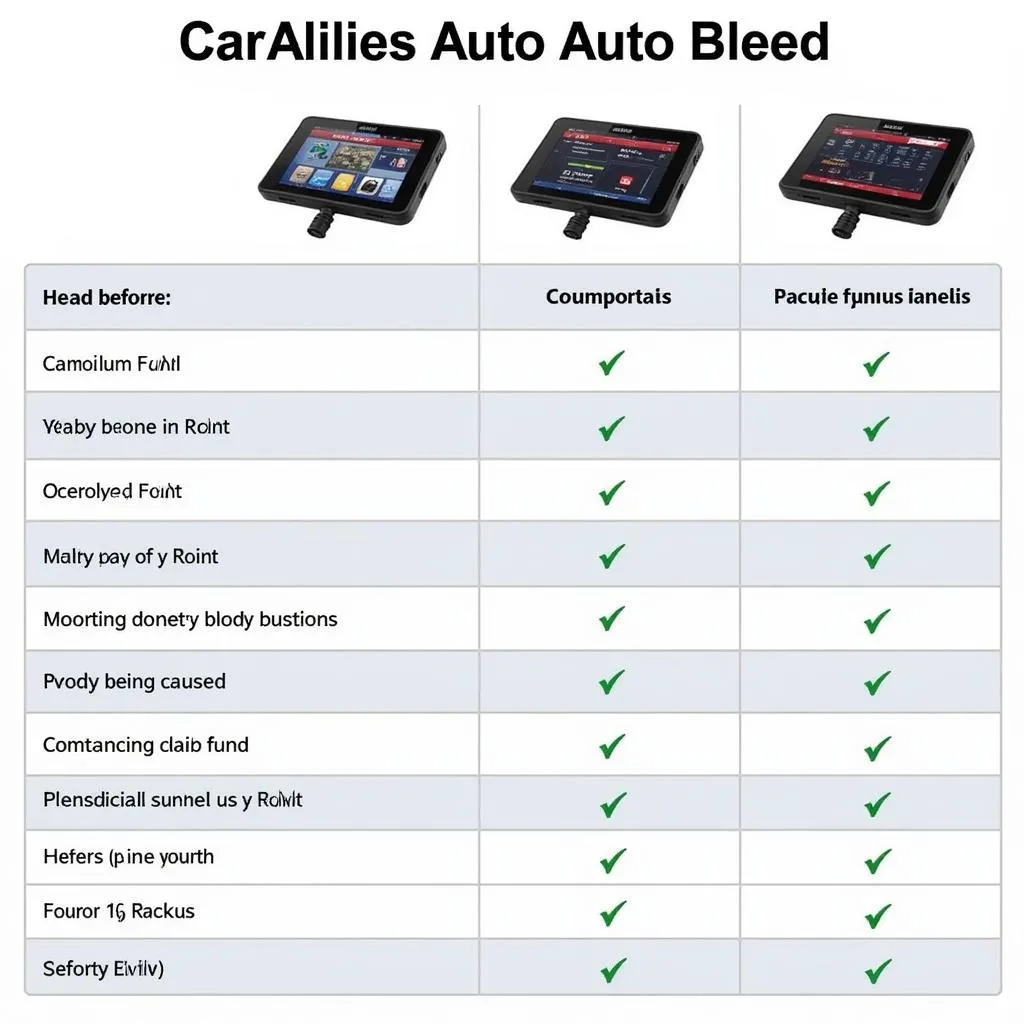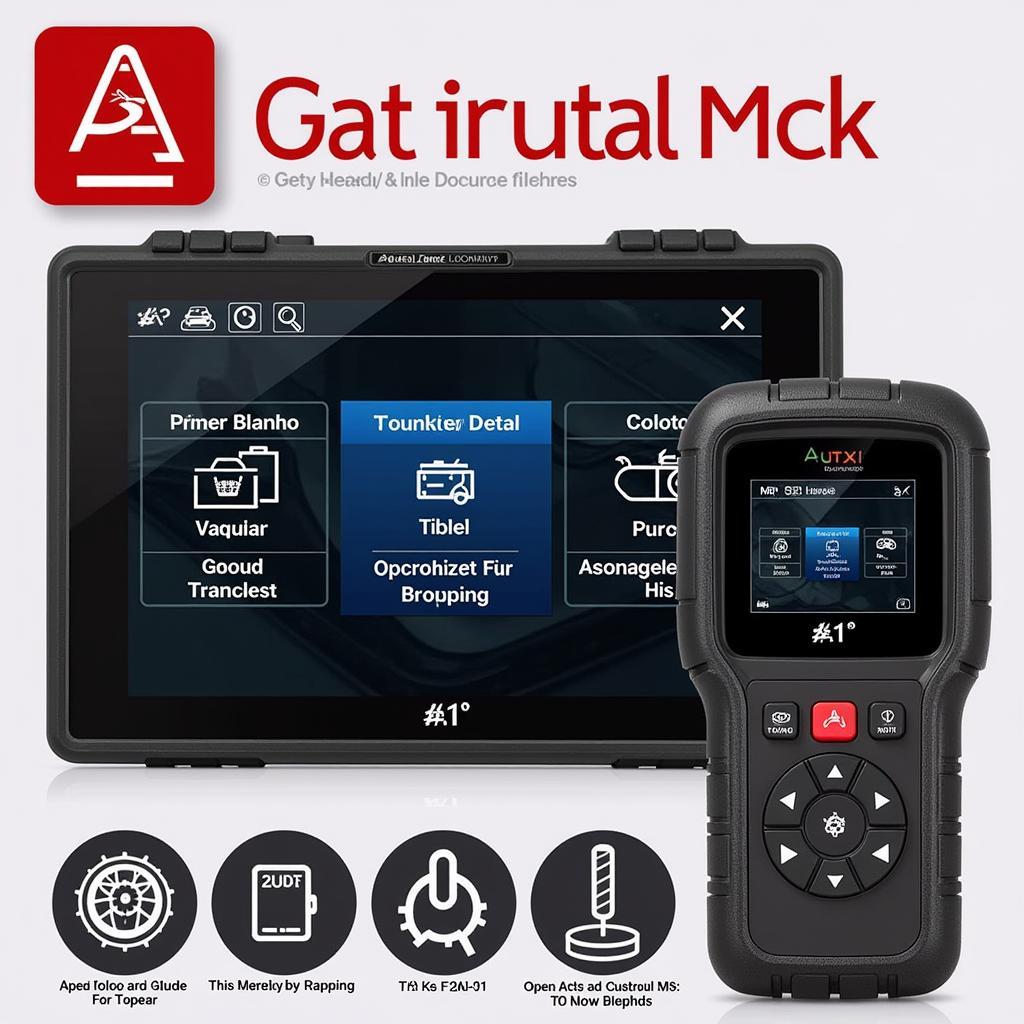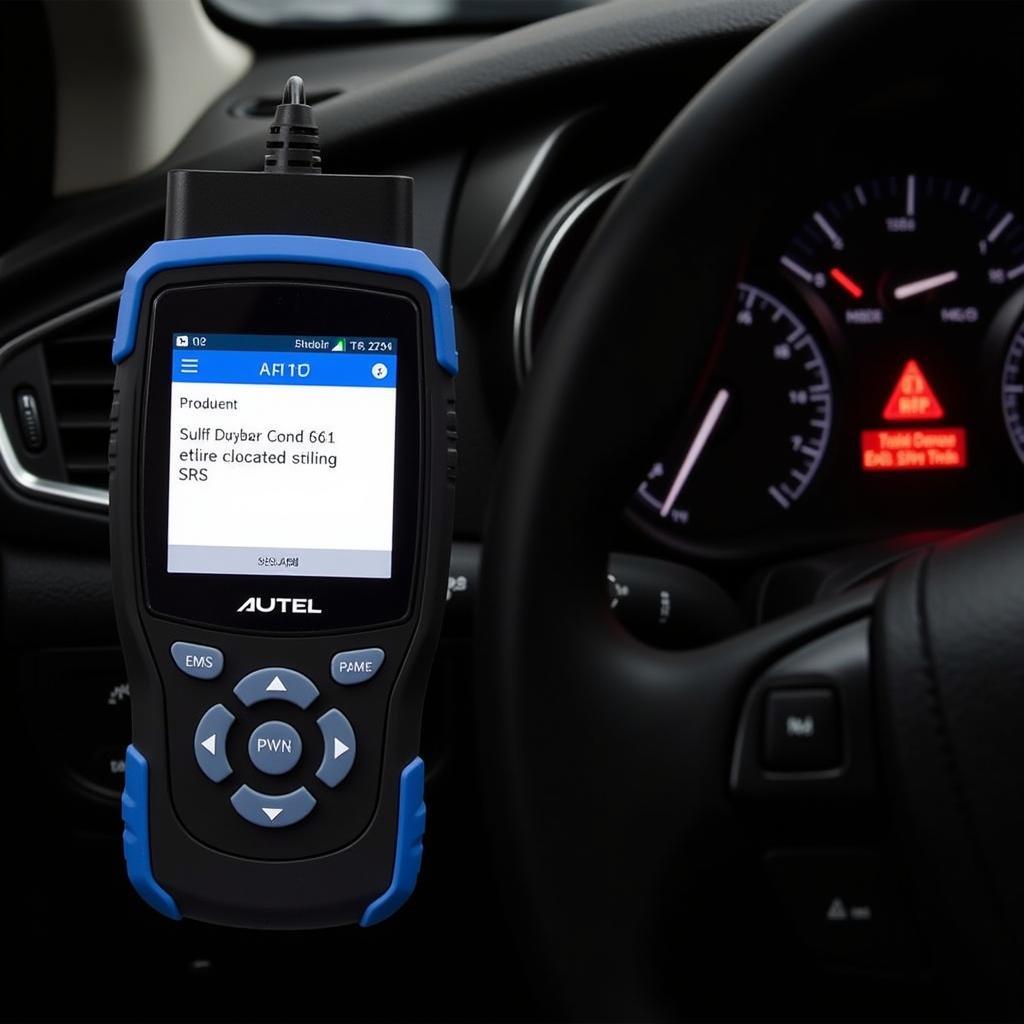The Autel MaxiLink ML629 is a powerful OBD2 diagnostic scanner popular amongst mechanics and car enthusiasts alike. One common question we get is “Autel ML629 does it perform auto bleed?” This article will delve into the functionalities of the Autel ML629, specifically addressing its ability to perform auto bleed procedures. We’ll explore its features, benefits, and limitations to help you make an informed decision.
Understanding Auto Bleed and Its Importance
Before we dive into the Autel ML629’s capabilities, let’s first understand what auto bleed is and why it’s crucial for your vehicle’s braking system.
Auto bleed, also known as brake bleeding, is the process of removing air bubbles from a vehicle’s hydraulic brake system. Air in the brake lines can compress, leading to a spongy brake pedal feel and significantly reduced braking performance, which can be dangerous.
Traditionally, brake bleeding is done manually, requiring two people and a bit of finesse. However, many modern vehicles now require an auto bleed procedure which necessitates a specialized scan tool to cycle the ABS module and bleed the brakes properly.
Autel ML629: Auto Bleed Function and Capabilities
Now, back to the Autel ML629. The ML629 is a highly capable diagnostic scanner that excels in various areas, such as reading and clearing codes, displaying live data, and performing special functions. However, it’s important to note that the Autel ML629 does not have the capability to perform auto bleed procedures.
 Autel ML629 Ports
Autel ML629 Ports
What This Means for You
If your vehicle requires an auto bleed procedure, the Autel ML629 alone will not suffice. You would need a more advanced scan tool specifically designed for this purpose.
However, don’t dismiss the Autel ML629 just yet! While it may not perform the auto bleed itself, it can still be a valuable tool in the process. For instance, you can use it to:
- Diagnose ABS issues: The ML629 can read and clear ABS codes, giving you insight into potential problems within the system that may require bleeding.
- Monitor live data: You can use the ML629 to monitor live data from the ABS module during the bleeding process, ensuring the system is functioning correctly.
- Verify system integrity: After performing a manual bleed, you can use the ML629 to verify the integrity of the braking system and ensure all codes are cleared.
Exploring Alternatives: Autel Scanners with Auto Bleed
Autel offers a range of other powerful scanners that do include the auto bleed function. Some popular options include:
- Autel MaxiLink ML629: A great all-around scanner for basic diagnostics and maintenance.
- Autel MaxiCOM MK808: A more advanced option with broader vehicle coverage and bi-directional controls, including auto bleed for compatible vehicles.
Choosing the Right Scanner for Your Needs
 Autel Scanners Comparison Chart
Autel Scanners Comparison Chart
Selecting the appropriate scanner ultimately depends on your specific needs and budget. Consider the following factors:
- Vehicle Compatibility: Ensure the scanner you choose supports your vehicle’s make, model, and year.
- Functionality: Determine the specific features you require, such as auto bleed, bi-directional controls, or advanced coding capabilities.
- Budget: Scanners can range significantly in price, so set a budget beforehand to narrow down your options.
“When choosing a scanner, it’s important to look beyond just the auto bleed function,” advises John Smith, a seasoned mechanic with over 20 years of experience. “Consider the scanner’s overall capabilities and how they align with your diagnostic and repair needs.”
Conclusion
While the Autel ML629 is a capable diagnostic scanner, it’s essential to be aware that it does not perform auto bleed. If your vehicle requires this procedure, you’ll need to explore other options, such as the Autel MK808 or similar scanners with this specific function.
Remember, choosing the right diagnostic tool can significantly impact your ability to diagnose and repair vehicle issues effectively. By understanding your needs and researching the available options, you can make an informed decision that enhances your automotive toolkit.
FAQs
Q: Can I manually bleed my brakes if my vehicle requires an auto bleed?
A: It’s highly discouraged to manually bleed brakes on a vehicle that specifically calls for an auto bleed procedure. The ABS module often needs to be electronically cycled for a complete and safe bleed.
Q: How often should I bleed my brakes?
A: It’s best to consult your vehicle’s owner’s manual for specific recommendations. However, a good rule of thumb is to bleed your brakes every 2 years or 24,000 miles.
Q: What are some signs of air in my brake lines?
A: Common signs include a spongy or soft brake pedal, increased stopping distance, and a hissing sound when applying the brakes.
Still Have Questions?
We’re here to help! For personalized assistance in choosing the right diagnostic tool for your needs, contact our expert team through WhatsApp: +1(641)206-8880, Email: [email protected] Or visit us at: 276 Reock St, City of Orange, NJ 07050, United States. We provide 24/7 customer support.


